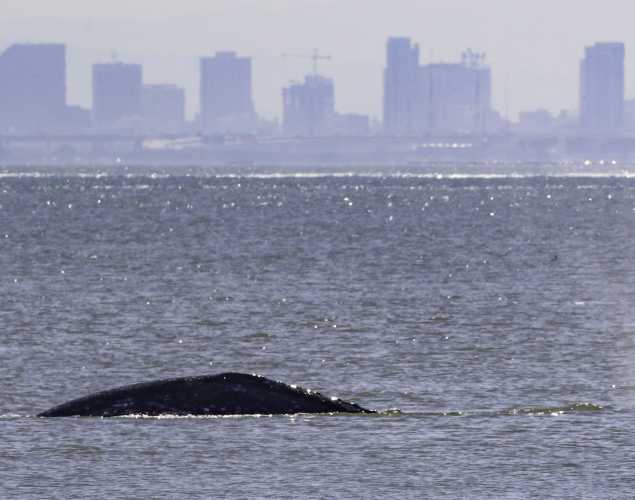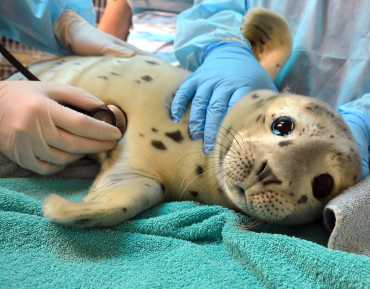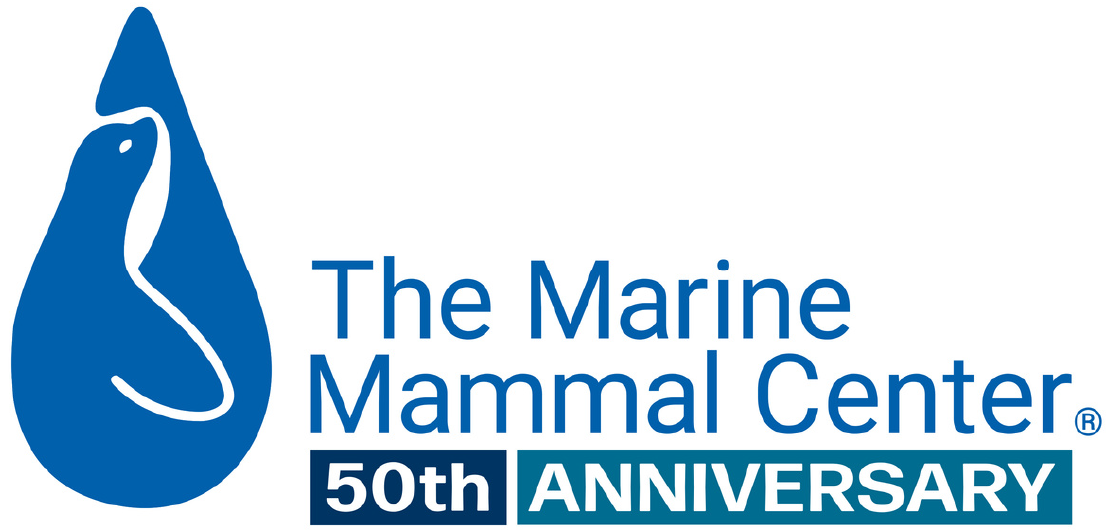
Ship Strike Confirmed as Cause of Death for Two Gray Whale Strandings
- Climate change
Ship strike confirmed as cause of death for two gray whale strandings in the San Francisco Bay Area this month; suspected in a third
Scientists at The Marine Mammal Center confirm that the gray whale that stranded in Pacifica, CA, died from blunt force trauma that can be attributed to a ship strike. This is the second gray whale this month that scientists confirmed died due to ship strike.
A third necropsy completed on Thursday on a carcass found in Richmond, CA, indicated yet another gray whale may have died due to ship strike. Increased numbers of gray whales have been sighted in the San Francisco Bay as the population continues their northerly migration this spring.
Researchers from the Center completed the necropsy Thursday on a gray whale carcass that surfaced last week in Richmond, CA. The team discovered deep propeller wounds that had severed its fluke. It was in otherwise excellent body condition, indicating it was not malnourished. Scientists suspect that this whale died due to a ship strike, and will confirm through further testing.
It is also suspected that she was the mother of the calf that died due to ship strike last week. Genetic testing will be conducted to confirm this theory. The two were seen foraging near San Mateo days before the calf’s carcass surfaced.
“We’re incredibly concerned to discover the death of three gray whales due to ship strikes in two weeks,” said Dr. Padraig Duignan, Chief Research Pathologist at The Marine Mammal Center.
Investigating each death is critical so that decision-makers can advise on shipping speeds in areas where whales are known to travel.
It is critical for scientists to conduct in-depth necropsies to better understand why animals are dying. Whales and other marine mammals face numerous human-caused threats and solutions must be found to protect healthy and vulnerable species alike. The Marine Mammal Center is committed to partnering with organizations and individuals to provide data and find solutions to prevent these deaths in the future.
The necropsy in Pacifica, CA, was completed Wednesday afternoon by scientists from The Marine Mammal Center and its partners at California Academy of Sciences. Nearly a dozen interns and students from around the world participated in the investigation to learn more about marine mammal health.
Blunt-force trauma from ship strikes, malnutrition and entanglements are the most common causes of death in whales The Marine Mammal Center’s research team has investigated.
In 2013, Cordell Bank and Greater Farallones National Marine Sanctuaries initiated a voluntary vessel slowdown program with the U.S. Coast Guard and International Maritime Organization to help reduce the lethality of ship strikes. The program, which was first developed in response to threats to endangered whale species, has become a nationwide model of collaboration with partnering agencies and shipping companies.
“The death of seven gray whales in the San Francisco Bay Area this year is a cause for serious concern as it speaks to the broader challenges this species continues to face,” says Dr. Duignan.
The findings of these investigations are incredibly valuable as they can help policymakers find long-term environmental solutions to help prevent these incidents in the future.
The whale in Pacifica was determined to be a 30-foot subadult female. The whale in Richmond was a 30- foot adult female, with its fluke absent. The Center collected more than two dozen tissue and blubber samples from each whales to submit for further testing. These samples are a vital component of the Center’s extensive baseline data on whales collected over the last 44 years and will contribute to ongoing and future research studies.
Biologists have observed gray whales in poor body condition during their annual migration this year potentially due to anomalous oceanographic conditions over the past few years that have contributed to shifting food sources. Malnutrition was the cause of death for three other gray whales that have stranded since March. A seventh whale carcass surfaced in Hercules, CA, and an investigation is pending.
Climate change affects water temperatures and prey availability, leading to shifting food sources for marine mammal populations and other marine species. Overfishing can also lead to reduced prey availability. Effective policies are critical to protect vulnerable marine mammal populations from the many human-caused threats they face in the wild.
As of Monday afternoon, four gray whales continue to frequent the Bay, according to Bill Keener at Golden Gate Cetacean Research. Experts continue to notice a change in migratory behavior of gray whales entering the San Francisco Bay in the late winter and early spring months, notably the length of stay and total number of animals frequenting the area.
“Many of the gray whales traveling through the relative safety of our outer coast waters of the sanctuary are detouring into the dire straits of San Francisco Bay in an act of desperation,” says MaryJane Schramm, spokesperson for the National Oceanic and Atmospheric Administration’s Greater Farallones National Marine Sanctuary. “Anyone on boats and other watercraft should prevent additional stress by staying at least 300 feet away and give them every break you possibly can.”
The eastern North Pacific population of gray whales has returned from the brink of extinction thanks to protections that prevented hunting. However, all species of whales face threats such as ship strikes, entanglements and shifting food availability, so it is critical for the Center to investigate each death in order to better understand the scope of human impacts on these animals.
Scientists at The Marine Mammal Center have responded to more than 80 gray whales in the organization’s 44-year history.
For more information or to set up an interview on this topic, please contact us at media@tmmc.org.
Yes, I want to save a life!

Yes, I want to save a life!
You’ll be giving sick and injured animals the best possible care at the Center’s state-of-the-art hospital. With your gift today, you are giving a patient a second chance at life in the wild.
See Our Latest News
{"image":"\/Animals\/Patients\/Harbor seals\/2020\/cropped-images\/hs-barnwood-by-bill-hunnewell-c-the-marine-mammal-center-315-0-3299-2577-1607370547.jpg","alt":"harbor seal Barnwood","title":"Last-Minute Gift Guide \u2013 Top Gifts that Give Back to Marine Animals","link_url":"https:\/\/www.marinemammalcenter.org\/news\/last-minute-gift-guide","label":"News Update","date":"2025-12-18 01:00:00"}

Last-Minute Gift Guide – Top Gifts that Give Back to Marine Animals
December 18, 2025
Read More{"image":"\/Animals\/Patients\/Hawaiian monk seals\/2025\/cropped-images\/b-ru72admission-to-ke-kai-ola112125photo-c-the-marine-mammal-center-noaa-permit-24359-0-364-1270-992-1766095407.jpg","alt":"A newborn Hawaiian monk seal pup with a black coat in rehabilitative care.","title":"Newborn Hawaiian Monk Seal Pup Now Receiving Care","link_url":"https:\/\/www.marinemammalcenter.org\/news\/newborn-hawaiian-monk-seal-pup-now-receiving-care","label":"Patient Update","date":"2025-12-18 01:00:00"}

{"image":"\/Animals\/Patients\/Hawaiian monk seals\/2025\/cropped-images\/d-ru28release-exam-at-ke-kai-ola111025photo-by-giancarlo-rulli-c-the-marine-mammal-center-noaa-permit-24359-0-0-1270-992-1764620886.jpg","alt":"","title":"Bird Flu Vaccine Trial Offers Hope for Protecting Hawaiian Monk Seals","link_url":"https:\/\/www.marinemammalcenter.org\/news\/bird-flu-vaccine-trial-may-offer-hope-for-protecting-hawaiian-monk-seals","label":"News Update","date":"2025-12-01 08:13:00"}

Bird Flu Vaccine Trial Offers Hope for Protecting Hawaiian Monk Seals
December 1, 2025
Read More{"image":"\/Animals\/Patients\/Hawaiian monk seals\/2021\/hms-pp08-by-sheila-latta-c-the-marine-mammal-center-noaa-permit-18786.jpg","alt":"Hawaiian monk seal","title":"The New York Times: Inside the Bird-Flu Vaccine Trial for Monk Seals","link_url":"https:\/\/www.marinemammalcenter.org\/news\/the-new-york-times-inside-the-bird-flu-vaccine-trial-for-monk-seals","label":"In the News","date":"2025-12-01 01:00:00"}

The New York Times: Inside the Bird-Flu Vaccine Trial for Monk Seals
December 1, 2025
Read More